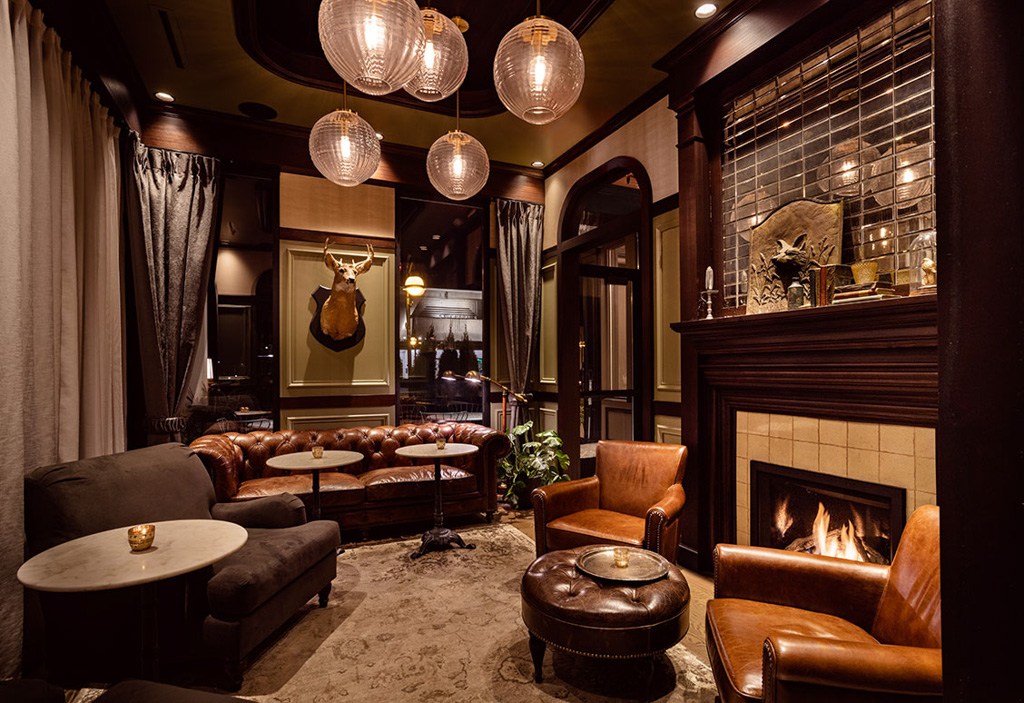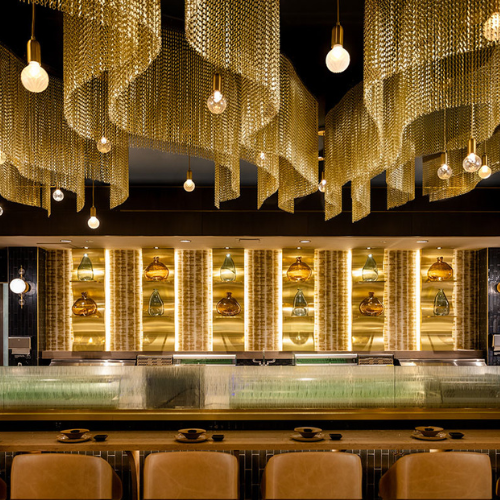
Beyond the Surface: Layered Restaurant Design
Why Layering Matters in Restaurant Design
In today's competitive restaurant landscape, it's no longer enough to have a well-designed space. Finishes, lighting, and furniture form the visual foundation, but these are just the beginning. The real emotional resonance - the kind of design that guests remember, talk about, and return to - comes from the thoughtful use of layered design elements.
By integrating artwork, window treatments, accessories, and multi-source lighting, layered design adds storytelling, softness, and spatial definition to a restaurant. It creates intimacy in large spaces, deepens the concept, and enhances the overall feel of the environment, not just its appearance.

From Functional to Personal: What Layered Design Adds
When layered design is done well, guests don't just see a space, they experience it.

Artwork
Rather than generic prints or stock photography, art can be interactive, sculptural, or seasonal. It might reflect local history, tell a family story, or incorporate tactile and dimensional elements. Thoughtful artwork engages curiosity and gives returning guests something new to discover.
Artwork

Accessories
Small objects can tell a powerful story. When intentionally placed, they reinforce the brand's identity and add a personal touch to the space. Whether it's historic memorabilia, handpicked decor, or design accents with cultural references, accessories help create a memorable and layered environment.
Accessories

Window Treatments
Often overlooked, window treatments add both softness and control over light. Sheer drapes, textured fabrics, or tailored shades can transform harsh light into a warm glow, setting the mood and enhancing visual comfort throughout the day.
Window Treatments
Lighting Layers: More Than Just Fixtures
Lighting isn't one-size-fits-all. Successful restaurants use layered lighting to create atmosphere and flexibility:
Ambient Lighting
Provides general illumination.

Accent Lighting
Highlight features like art walls or textured surfaces.

Task Lighting
Adds depth and supports function.

This layered approach allows the space to transition fluidly from lunch service to dinner rush to late-night cocktails. It also lets the design adapt to the natural light of the day, creating an environment that feels alive and responsive.
Layering for Scale and Comfort
A layered design can also help define zones within an open-plan restaurant without the need for walls or partitions. Large spaces become more comfortable when softened by the addition of area rugs, planters, ceiling features, or pendant lighting. These elements provide a sense of scale and containment that improves both aesthetics and acoustics. For guests, this means a space that feels more intimate, even in a high-volume dining room. For operators, this translates into improved workflow, increased comfort, and a higher likelihood of repeat visits.



The Cost of Overlooking Layered Design
When restaurants skip layering, either through value engineering or a lack of vision, the space can feel incomplete. The finishes may be polished, the floor plan efficient, but without softness, dimension, and personality, the experience often feels cold or impersonal.
Guests may not always know what's missing, but they'll feel it.
In hospitality, where emotional connection and atmosphere are everything, layered design becomes a business decision, not just an aesthetic one.

2025 Restaurant Projects

Adalina Prime
Poised to become a standout in the growing list of Fulton Market restaurants.




